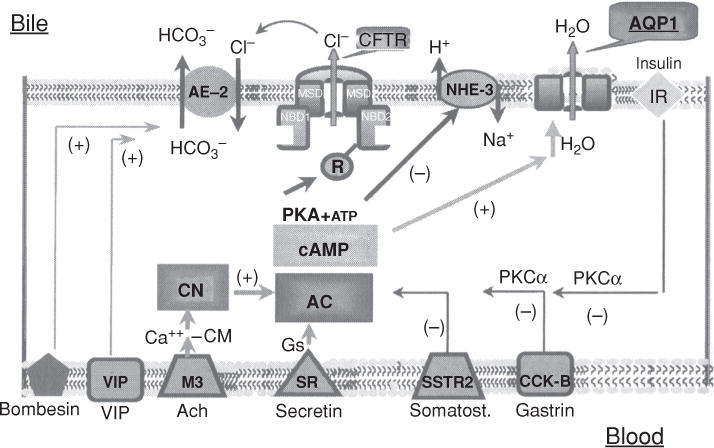Figure 10.

Hormonal regulation of cholangiocyte HCO3− excretion based on studies in rodents. Secretin induces ductular bicarbonate-rich choleresis by activation of apical Cl−/HCO3− exchanger via a cyclic adenosine monophosphate (cAMP) and PKA-dependent pathway; acetylcholine, by activation of calcineurin, induces a “sensitization” of adenylcyclase to secretin leading to a maximal stimulation of the Cl−/HCO3− exchanger. Vasoactive intestinal peptide (VIP) and bombesin stimulate cholangiocyte bicarbonate secretion via a cAMP and cyclic guanosine monophosphate (cGMP)-independent pathway. Somatostatin, gastrin, and insulin inhibit both basal and hormonal induced bicarbonate cholangiocyte secretion via a PKC-α-dependent pathway. Ach, acetylcholine; M3, muscarinic receptor 3; SR, secretin receptor; CM, calmodulin; AC, adenyl cyclase; PKA, protein kinase A; PKCα, protein kinase c alpha; AE-2, Cl−/HCO3− exchanger; CFTR, cystic fibrosis transmembrane conductance regulator; NHE-3, sodium hydrogen exchanger isoform 3; AQP1, aquaporin 1; IR, insulin receptor. Reprinted, with permission, from Ref. (183).
